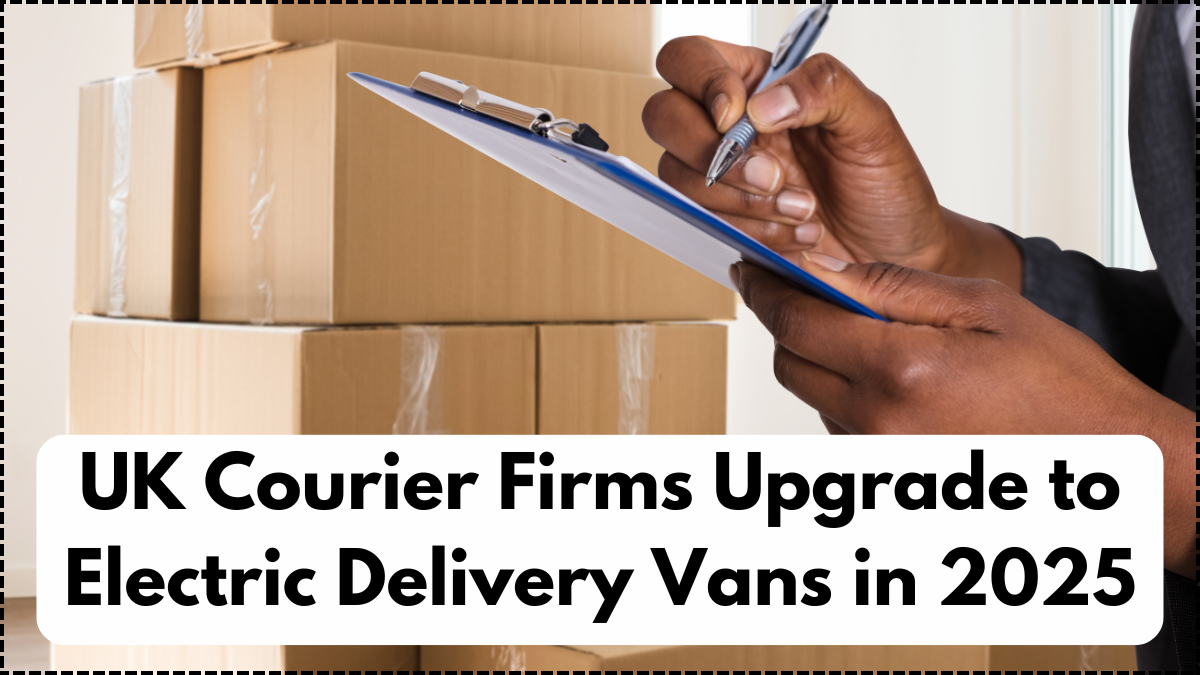In 2025, the UK’s logistics and delivery industry is undergoing a revolutionary shift as major courier companies move forward with large-scale van fleet upgrade initiatives. The widespread adoption of electric delivery vans is transforming the landscape of urban transport, cutting down emissions and operating costs while boosting environmental compliance. With the UK government reinforcing its net-zero emissions targets and expanding low-emission zones across major cities, this shift is more than a trend—it is a necessity.
Leading players like Royal Mail, DPD, and Hermes have already begun electrifying their vehicle fleets, showcasing the industry’s strong commitment to green logistics. These upgrades are not only reducing carbon footprints but also contributing to quieter, more sustainable city deliveries. As technology matures and infrastructure expands, electric delivery vans are quickly becoming the new standard across the United Kingdom.

Why UK Courier Firms Are Choosing Electric Vans
Courier companies are at the heart of last-mile delivery, especially with the post-pandemic e-commerce surge. However, traditional diesel vans pose significant environmental and operational challenges. Rising fuel prices, maintenance costs, and stringent emission regulations have pushed fleet managers toward electric mobility. The van fleet upgrade to electric alternatives is not only a green decision but also a strategic business move.
Key reasons behind the switch include:
-
Government incentives and tax relief for electric vehicle adoption
-
Expanding ULEZ (Ultra Low Emission Zone) enforcement in cities
-
Lower running and maintenance costs for EVs
-
Enhanced brand reputation through green practices
-
Integration of smart fleet management for route optimization
By adopting electric delivery vans, courier firms are responding to the dual need for cost efficiency and environmental responsibility.
Leading Companies and Their EV Adoption Plans
In 2025, several UK courier firms have taken bold steps in fleet electrification. DPD, for example, has committed to using only EVs in 30 major cities by the end of the year. Similarly, Royal Mail has deployed thousands of electric vans for daily deliveries. These initiatives are part of broader corporate strategies aimed at achieving net-zero targets by 2030.
Here’s a comparison of top courier firms and their van fleet upgrade status:
| Courier Company | No. of Electric Vans Deployed (2025) | EV Coverage Area | Carbon Reduction Goal |
|---|---|---|---|
| Royal Mail | 5,000+ | National (urban focus) | Net-zero by 2040 |
| DPD UK | 4,200+ | 30 major UK cities | Net-zero by 2030 |
| Hermes (Evri) | 3,000+ | Urban & suburban regions | 50% reduction by 2027 |
| Amazon Logistics | 2,500+ (UK-specific) | Metropolitan zones | Carbon-neutral operations |
This data reflects a growing commitment to cleaner transport operations and greater dependence on electric delivery vans.
Infrastructure and Policy Support Driving the Shift
The success of van fleet upgrade programs hinges on charging infrastructure and policy backing. The UK government has introduced grants and tax breaks under its OZEV (Office for Zero Emission Vehicles) scheme, encouraging small and large businesses to electrify fleets. Additionally, the installation of commercial EV charging stations across the UK is accelerating in both public and private sectors.
Supporting policies include:
-
Plug-in Van Grant covering up to 35% of the van cost (up to £5,000)
-
Reduced vehicle excise duty for EVs
-
Zero emissions zones in London and Oxford with entry incentives for electric fleets
-
Workplace Charging Scheme (WCS) to support depot-based charging stations
Such measures ease the operational transition for courier firms and promote wider adoption of electric delivery vans across the logistics chain.
Challenges and Outlook for the Courier Industry
While the growth in electric fleet adoption is significant, there are still challenges ahead. The initial investment for van fleet upgrade programs can be high, and rural or long-distance delivery routes pose range-related issues. Battery recycling, infrastructure limitations in remote areas, and skilled labor for EV maintenance are areas requiring attention.
Despite these hurdles, the long-term advantages remain clear:
-
Reduction in operating costs by 20–40%
-
Lower noise pollution in urban areas
-
Compliance with future emission regulations
-
Scalability as EV tech improves year on year
Forecasts suggest that by 2027, more than 60% of UK courier vans will be electric, making electric delivery vans the backbone of sustainable logistics.
Conclusion
The ongoing van fleet upgrade across UK courier firms is a critical milestone in the nation’s green transition. By investing in electric delivery vans, companies are not only preparing for future regulatory landscapes but also reaping operational benefits today. This change represents a perfect blend of environmental accountability and smart business strategy.
As the demand for faster and greener deliveries grows, the adoption of EVs in courier services will only accelerate. With supportive policies, technological advancements, and growing public awareness, the courier industry in the UK is well on its way to leading the charge in electric mobility.
FAQs
Why are UK courier companies switching to electric delivery vans?
Courier companies are adopting electric vans to meet government emissions regulations, reduce operational costs, and improve sustainability.
What support is available for courier firms upgrading to electric fleets?
Government incentives such as the Plug-in Van Grant and tax benefits make it easier for courier companies to adopt electric vehicles.
Which courier companies in the UK are leading in EV adoption?
Royal Mail, DPD, Hermes (Evri), and Amazon Logistics are among the top firms actively upgrading to electric delivery vans in 2025.
What are the operational benefits of using electric vans?
Electric vans offer lower fuel and maintenance costs, reduced emissions, and quieter operation, making them ideal for urban deliveries.
Are there any challenges in adopting electric vans?
Challenges include high upfront costs, limited range for long-distance routes, and the need for expanded charging infrastructure in certain regions.
Click here to learn more